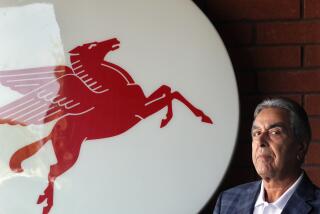THE DEVELOPMENT OF HYDROCARBON MAN
1896: Henry Ford builds his first car, providing a new market for gasoline and giving birth to hydrocarbon mobility.
1907: First drive-in gasoline station opens in St. Louis, replacing supplies sold in general stores.
1919: Capt. Dwight D. Eisenhower leads a lumbering cross-country caravan to demonstrate the potential of motor transportation.
1946: Levitt family acquires Long Island acreage for Levittown tract houses, setting the prototype for the heart of the hydrocarbon society, the American suburbs.
1947: Construction of the Los Angeles freeway system begins in earnest, including the key downtown “interchange” uniting individual freeways into one grand system.
1952: The first Holiday Inn opens in Memphis, giving “motels” a new respectability as the hydrocarbon family takes to the road.
1955: McDonald Brothers and milkshake salesman Ray Kroc introduce assembly-line food at a new outlet in suburban Chicago to launch the hydrocarbon fast-food era.
1956: President Eisenhower signs the Interstate Highway Bill, providing 41,000 superhighway miles to crisscross the hydrocarbon nation.
1970: Earth Day environmentalists protesting increased smog and pollution symbolically attack hydrocarbon autos with sledge hammers.
1973: Arab oil embargo introduces the first oil shock with new and troubling scenes of lines at America’s gas pumps.
1979: Political upheaval in Iran translates to the second oil shock and re-emergence of gas lines snaking the blocks of hydrocarbon suburbia.
1990: The second Earth Day launches worldwide rallies endorsing environmental reform and promoting the “green decade.”
1990: Iraq invades oil-rich Kuwait and U.N. multinational forces defend Persian Gulf oil reserves and “our way of life.”
2000: After Hydrocarbon Man: Environmental Person?
More to Read
Inside the business of entertainment
The Wide Shot brings you news, analysis and insights on everything from streaming wars to production — and what it all means for the future.
You may occasionally receive promotional content from the Los Angeles Times.










